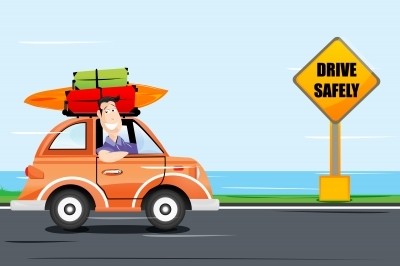Vehicular Safety Inspection, Maintenance And Repair

By law, every employer must make sure that work equipment is maintained in an efficient state, in efficient working order and in good repair.
Inspection
Daily checks Drivers should check tyres, lights and indicators at the start of every shift. They will need instruction or training on carrying out appropriate checks and reporting problems. Employers may find it helpful to give drivers a list of daily checks to sign off for their vehicles.
Planned maintenance
Regular preventive maintenance inspections may be based on time or mileage. Each vehicle you purchase or hire should come with a handbook giving manufacturer's guidance on regular maintenance.
Planned maintenance helps to prevent failures during use. It should be thorough, regular and frequent enough to meet the manufacturer's guidelines and common sense. Pay special attention to:
brakes;
steering;
tyres;
mirrors and any fittings that allow the driver to see clearly (for example, CCTV cameras);
windscreen washers and wipers;
warning devices (for example, horns, reversing alarms or lights);
ladders, steps, or walkways;
pipes, pneumatic or hydraulic hoses, rams, outriggers, lifting systems or other moving parts or systems; and
specific safety systems, for example, control interlocks to prevent the vehicle or its equipment from moving unintentionally, racking, securing points for ropes.
Safety precautions when maintaining vehicles
*Apply brakes.
*Chock wheels.
*Start engine with brakes on and in neutral gear.
*Prop or support raised parts.
*Use a tyre-cage or other restraining device when inflating tyres on split-rim wheels.
*Remove tyres from wheels before welding, cutting or heating work begins on a wheel or wheel rim fitted with a tyre, even if the tyre is deflated.
*Beware of the risk of explosion when draining and repairing fuel tanks, and from battery gases. *Never drain or fill fuel tanks when the equipment is hot or in a confined space, or over a pit.
*Avoid short-circuiting batteries. Charge batteries should be charged in well-ventilated areas. *Suitable personal protective equipment should be provided and used for handling battery acid.
*Make sure that maintenance staff cannot breathe asbestos dust from brake and clutch lining pads.
*Only allow people who have received the relevant information, instruction and training to do maintenance work.
Inspection
Daily checks Drivers should check tyres, lights and indicators at the start of every shift. They will need instruction or training on carrying out appropriate checks and reporting problems. Employers may find it helpful to give drivers a list of daily checks to sign off for their vehicles.
Planned maintenance
Regular preventive maintenance inspections may be based on time or mileage. Each vehicle you purchase or hire should come with a handbook giving manufacturer's guidance on regular maintenance.
Planned maintenance helps to prevent failures during use. It should be thorough, regular and frequent enough to meet the manufacturer's guidelines and common sense. Pay special attention to:
brakes;
steering;
tyres;
mirrors and any fittings that allow the driver to see clearly (for example, CCTV cameras);
windscreen washers and wipers;
warning devices (for example, horns, reversing alarms or lights);
ladders, steps, or walkways;
pipes, pneumatic or hydraulic hoses, rams, outriggers, lifting systems or other moving parts or systems; and
specific safety systems, for example, control interlocks to prevent the vehicle or its equipment from moving unintentionally, racking, securing points for ropes.
Safety precautions when maintaining vehicles
*Apply brakes.
*Chock wheels.
*Start engine with brakes on and in neutral gear.
*Prop or support raised parts.
*Use a tyre-cage or other restraining device when inflating tyres on split-rim wheels.
*Remove tyres from wheels before welding, cutting or heating work begins on a wheel or wheel rim fitted with a tyre, even if the tyre is deflated.
*Beware of the risk of explosion when draining and repairing fuel tanks, and from battery gases. *Never drain or fill fuel tanks when the equipment is hot or in a confined space, or over a pit.
*Avoid short-circuiting batteries. Charge batteries should be charged in well-ventilated areas. *Suitable personal protective equipment should be provided and used for handling battery acid.
*Make sure that maintenance staff cannot breathe asbestos dust from brake and clutch lining pads.
*Only allow people who have received the relevant information, instruction and training to do maintenance work.
- 0f476a76e1a38c2daba3b97f06cb277db4.jpg
- u058ccb2af952f30f745f55eba4b0f3420.jpg
Videos
Automotive Repair: Performing A Safety Inspection
References
http://www.hse.gov.uk/workplacetransport/vehicles/inspection.htm
https://www.google.com.ph/search?q=vehicle+safety&biw=1366&bih=667&source=lnms&tbm=isch&sa=X&ei=5bA0VMCQBYzc8AX2tYCQDg&ved=0CAYQ_AUoAQ#facrc=_&imgdii=_&imgrc=NSF7Ga4lwD0hIM%253A%3BaZy6LRSGudR_4M%3Bhttp%253A%252F%252Fwww.arynga.com%252Fwp-content%252Fuploads%252F2014%252F02%252FVehicle-Safety.jpg%3Bhttp%253A%252F%252Fwww.arynga.com%252Fconnected-vehicle%252Fconnected-car.html%3B364%3B215
http://www.youtube.com/watch?v=hK2Qk_UZo0A